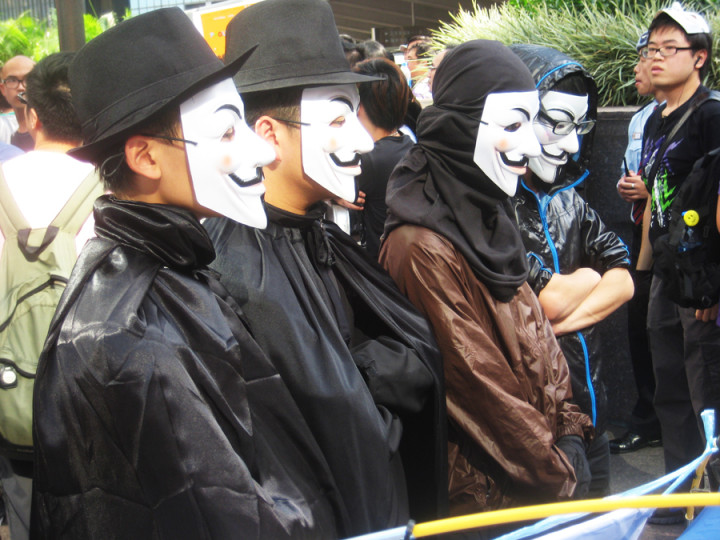“Remember, remember, the 5th of November; Gunpowder, treason and plot; I see no reason why gunpowder, treason; should ever be forgot.”
Thus opens BBC’s rundown on this still celebrated day in England and Pressenza leans on the institution of the BBC for the following information on its history given it’s the media centrefold of once Great Britain and surely THE place to get solid cultural info on the matter.
Guy Fawkes was captured under the House of Lords, with 36 barrels of gunpowder, a box of Bryant and May and fuses, just when he was to blow up King James I and his parliament.
The instigator and his not-so-merry men were persecuted Catholics and in those days Catholicism was a no-no religion thus on James I becoming king, in 1603, he continued lording it over Britain as a Protestant country.
The church (of England) itself dates its establishment to the 6th-century Gregorian mission in Kent led by St Augustine. Though the English church renounced papal authority when Henry VIII broke with Rome to secure an annulment from Catherine of Aragon in the 1530s.
Thenceforth, the English Reformation accelerated under Edward VI’s regents before a brief restoration of Catholicism under Queen Mary I and Philip II of Spain. This led to an Act of Supremacy, 1558, and the Elizabethan Settlement charted a course whereby the English church was to be both ‘Catholic’ and Reformed.
However, following decades of tension and violence between Catholics and the new Anglican religion, the English monarch as the head of the church had no loyalty to the popes in Rome and Catholicism was a religion not just disapproved of by the state but actively suppressed.
Persecution of Catholics had become ever more severe during the reign of Elizabeth I, redoubled after the attempted invasion in 1588 by the Catholic Spanish Armada, which was supported by the then pope. Thus Catholic priests were forced underground and had to hold ceremonies in secret, in homes, plus Catholics were required to attend Protestant services.
With the accession of James I, whose wife was a Catholic, as was his mother, Mary, Queen of Scots, the situation took on a brighter hue for the Roman Church but not for long as by 1605, in order to placate extremist Protestants as per the Puritans, James once again increased penalties on those who still practised the Catholic religion.
This brings the matter to the moment when five men met in a London inn to discuss a very naughty plan. – the Gunpowder Plot of 1605.
It was Robert Catesby, a ‘gentleman’ of Warwickshire, together with Guy Fawkes and three other plotters, that decided to strike at the opening of parliament on 5 November. Their thoughts ran along lines of… with the king dead, James’ daughter, Elizabeth could ascend to the throne, returning Britain to the Catholic fold.
The plotters rented a cellar under the House of Lords and packed it with enough explosive to do the dirty deed.
Something akin to what conspiracy theorists hold about 9-11 then took place… a relative of one of the plotters received an anonymous letter which warned against attending Parliament for the opening. That letter got to Robert Cecil unbeknown to the plotters who had no cause to believe their plan was exposed.
On 4 November 1605, Mr Fawkes was arrested – dressed for a swift getaway with spurs on his boots – and had to endure two days of torture in the Tower of London, which he did with a bit of style before confessing, which allowed the remaining plotters time to escape. The gang however made their last stand at Holbeche House in Staffordshire, where several, including Catesby, died in the shoot-out with the king’s men.
On 30 and 31 January 1606, eight people, including Fawkes, were executed by being hanged, drawn and quartered. Even those who had perished at Holbeche House were exhumed and decapitated.
Thereby lies the story of the legacy of the Gunpowder Plot.
In its aftermath, James I passed new laws removing Catholics’ right to vote and restricting their role in public life. It would be another 200 years before these restrictions were fully lifted.
Despite building bonfires every November 5 and raiding other’s bonfires and being raided ourselves no one spoke about the origins of Guy Fawkes night as we were too busy gathering old furniture and shrubbery, guarding the heap, and taking the Guy around the doors begging for money to buy fireworks.
Certainly we never ganged up in accord with Protestants and Catholics, it was purely situational. We were the Clay Bankers, there were the Bottom Roaders, the Tippers, The Dene Fielders, the Foundriers, and more… Religion took a back seat and the catapult and sling was the military technology of choice, so things had improved somewhat from the 17th Century. The Guy was placed atop the bonfire and everyone cheered as he went up in flames and no one really knew why. ISIS be warned!










